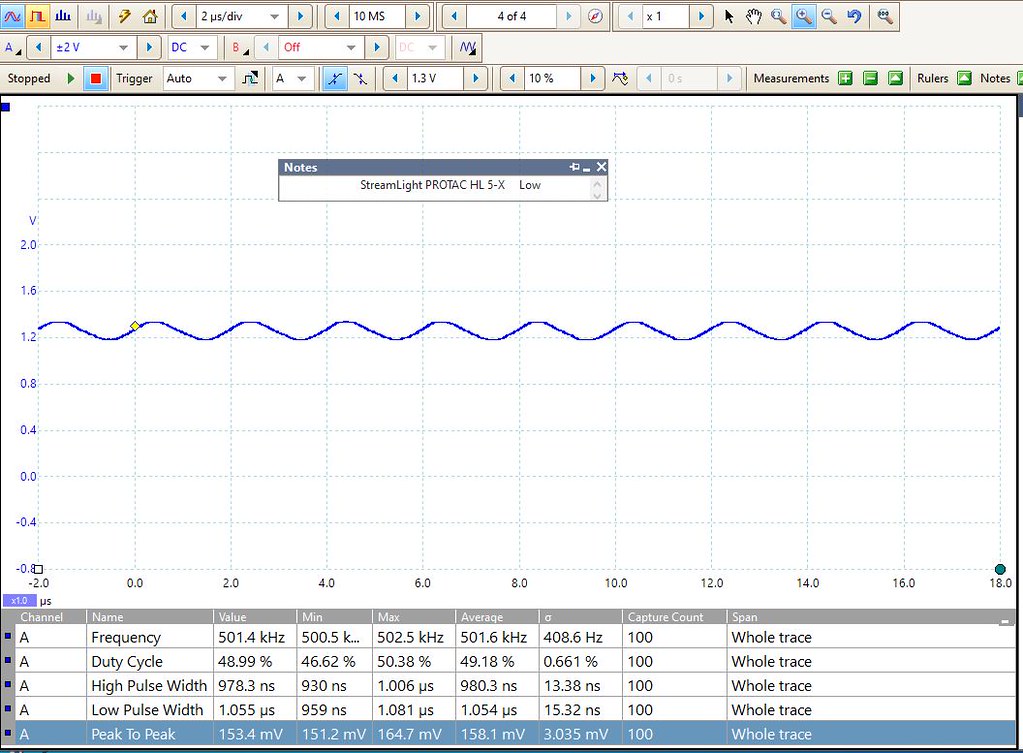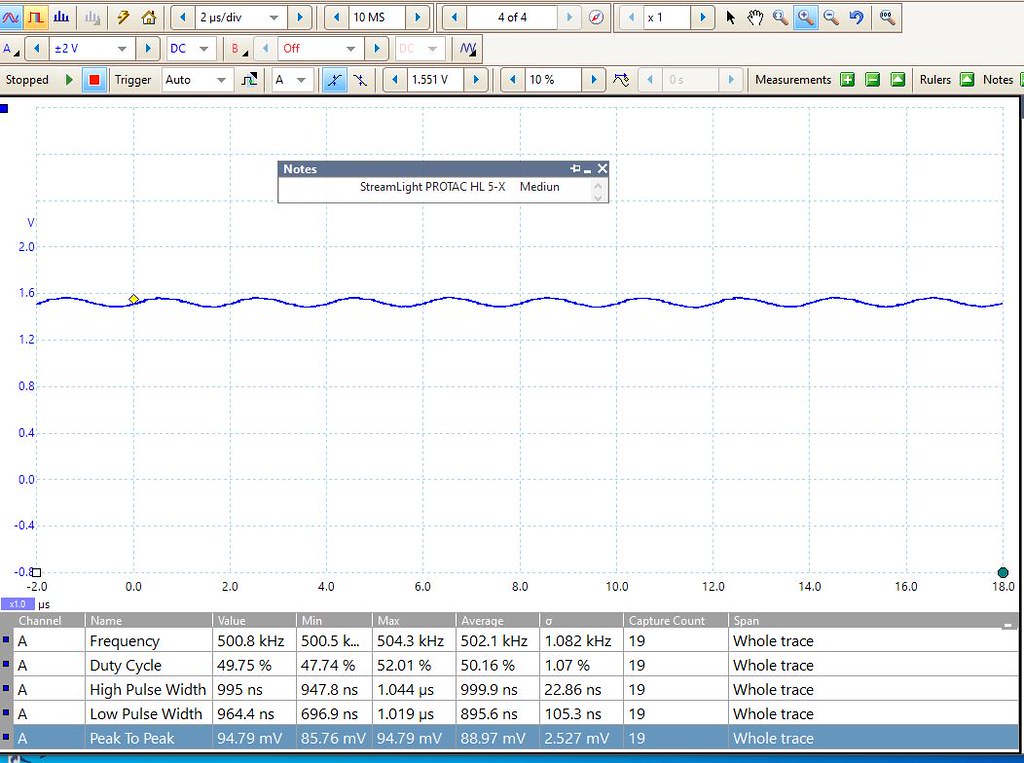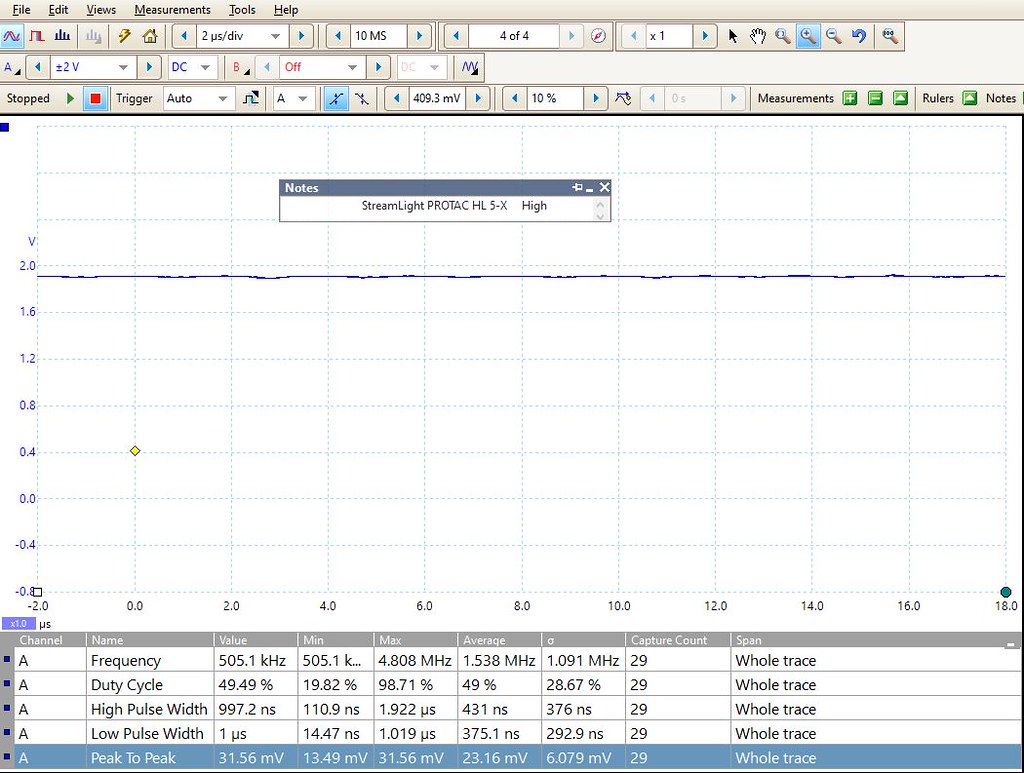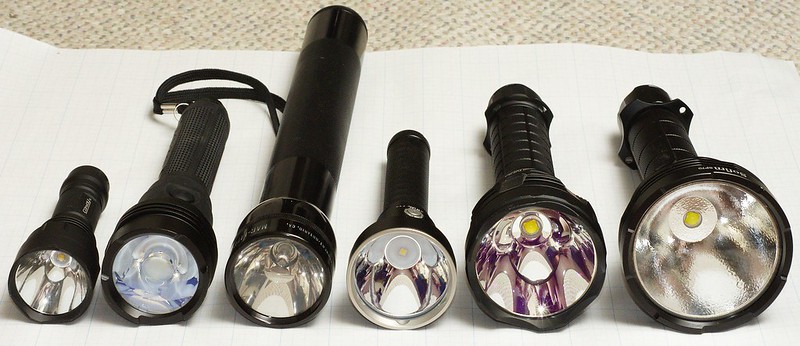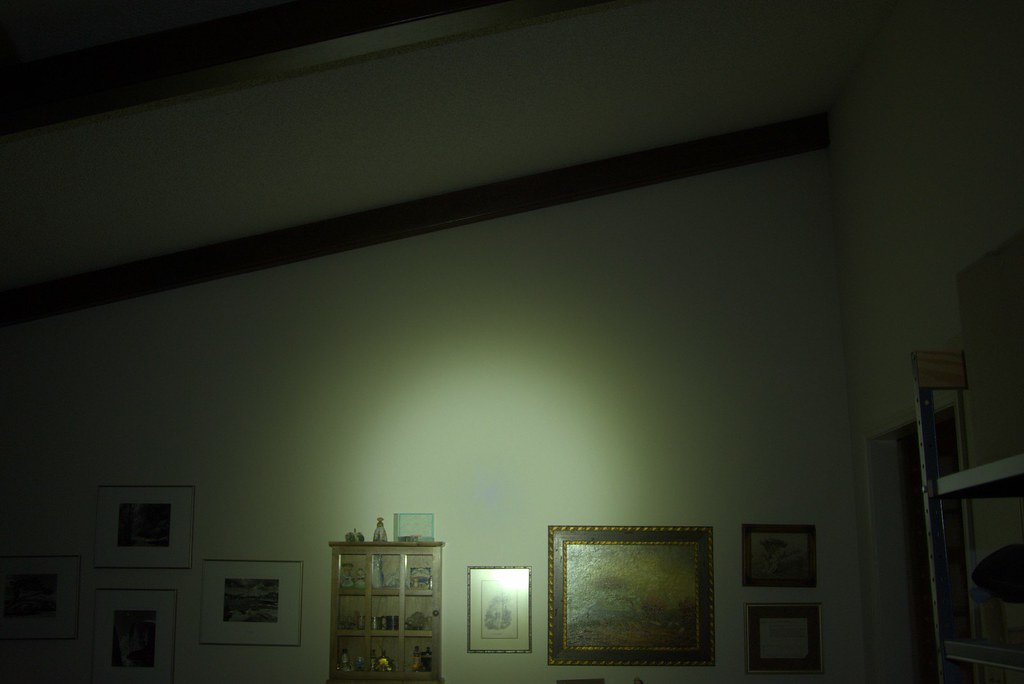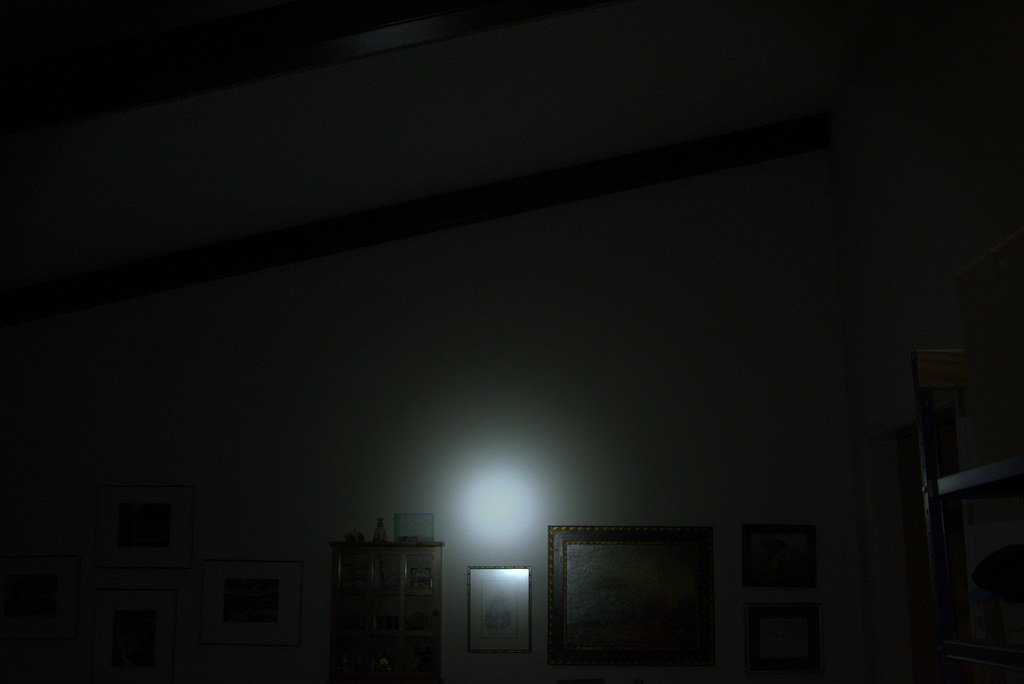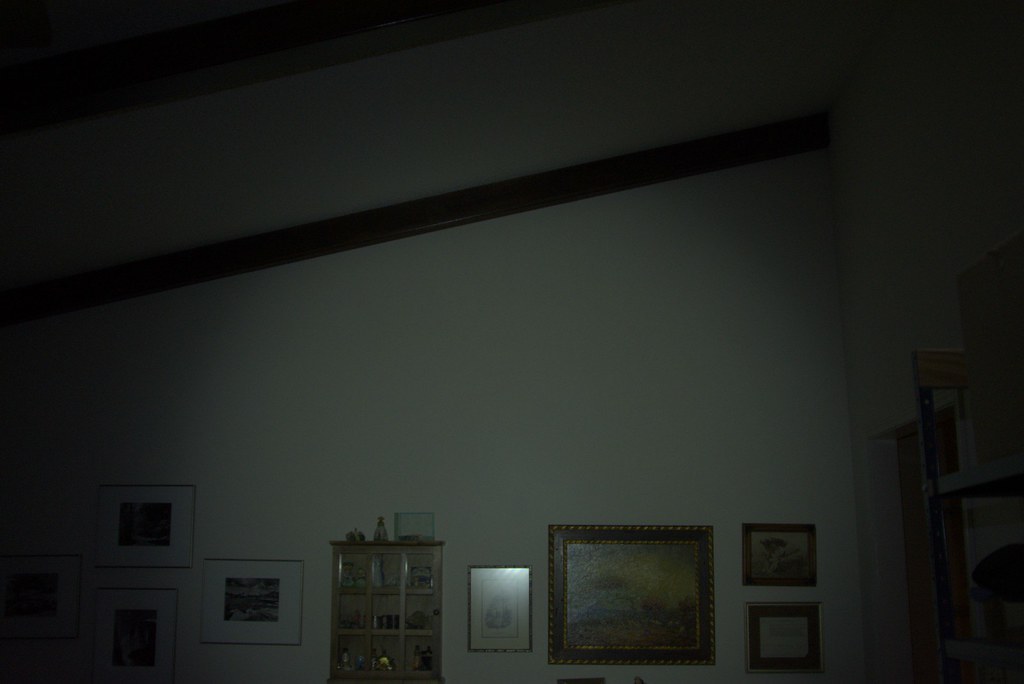An in depth review of a “Tactical” Flashlight. Warning, Long Post.
I thought, as a newbee here, I’d see if you all would be interested in an occasional review like this. One of the rabbit holes I went down a few years ago was one well lighted by flashlights.
If this is not appropriate for the Addicts forum, please forgive me, and let know. Thanks.
Not surprisingly, there is an active community of Flash-aholics, that are as passionate about their lights as many here are about the 1911.
One of the problems with making decisions about flashlights is that there is no place to actually handle one. Decisions are based on manufacturers descriptions and the reviews at places like Amazon.
Claims by manufactures are often outlandish or use standards that apply to nothing. And unfortunately something like 80% of the reviews are bogus. Someone posting “It’s the brightest light I’ve ever seen” really tells ya nothing.
So take a gander, and let me know if I should never darken your door again with this type of thing, or perhaps do a few more if the spell hits me again….
The Streamlight protac HL 5-X is marketed as a “Tactical” flashlight. From the Streamlight propaganda I reduced the description to:
A 3500 Lumen Duty Light with a runtime of 1.25Hrs on high, Beam distance 452m, and 51,000 Candela.
Rated IPX7 – 1 meter water for 30 minutes and 1 meter impact.
It has a Glass lens, TIR optic, 6000 series “aircraft” aluminum with anodized finish, C4 LED Technology, and a “sure grip rubber sleeve”.
Made in China (not clearly stated in the descriptions by the way).
Here’s a link to the Streamlight product fact sheet:
https://www.streamlight.com/docs/default-source/fact-sheet/321.pdf?sfvrsn=5
I found a good deal on this light at Bowtach ($50) and Midway ($70) where I got my first one.
(These were selling for over $100 a year ago)
I’ve been curious as to what the mainstream makers have been doing. So I thought I’d give one a try.
It is sold in two flavors. One has the light, (2) 18650s with built in charging ports and a USB cord. The second is the light with (4) 123s (for less $$). I got the latter.
Light and batteries
![Image]()
Opening the box I found the 123s in a Ziploc bag and the strap already attached. The batteries were not at full voltage. Clearly I got sent a returned unit from Midway. No biggie if it works.
As expected there is a nice box.
![Image]()
Specs on the outside.
![Image]()
Multi Fuel – Gas, Diesel, or Propane?
![Image]()
![Image]()
And we see a date of 3/19
I wonder if that’s for the light or the box?
The instruction sheet
![Image]()
![Image]()
The secret handshake to change programs.
Nine clicks then a hold do the trick.
![Image]()
Take a look at the “Lifetime Warranty”.
It covers everything except the stuff that will break, like “bulbs” (I wonder do LEDs count as bulbs?), switches, and electronics (which get 2 years). And you need proof of purchase!
And it doesn’t cover abuse or normal wear.
Not exactly a “if you break it we will fix it” warranty that ought to come from a US company selling a “Duty/Tactical/Operators/Ninja” light. And if you look in the right place, it’s made in China.
The Specs as I measured them
Length = 9.5” (241mm)
Head OD = 2.245” (57mm)
Lens (visible) OD = 1.795” (45.6mm)
Heat sink OD = 2.34” (59.5mm)
Switch OD = 1.716” (43.59mm)
Tube OD = 1.231” (31.26mm)
Metal at end of tube OD = 1.05” (26.67mm)
Battery tube ID = 0.751” (19.07mm)
Weight with batteries = 1Lb, 3.1oz.
![Image]()
This is beefy for a 18650 light. For comparison a WOWTAC A4 is 0.9” (22.86mm) OD on the tube and is much lighter at 11.5oz. with batteries.
The end cap is not rubber coated. It has a single spring – tapering backwards from what we normally expect.
The threads and O-ring were dry and needed lubing. Even though the endcap and tube threads seem to be coated, the light can’t be locked out by unscrewing the cap. It remains on even with the O-ring well exposed. The threads are a fine pitch with sharp tops – not square cut.
End Cap
![Image]()
The tube and switch area are covered in a firm rubber. Think Hogue grips or inner tube.
There is texture on most of the tube. It gives a very secure hold.
Switch
![Image]()
The head with the heatsink is not covered. There are crenulations on the rim. They are not sharp or deep (lawyer approved?). The purpose is, I assume, to let the user know if the light is on when placed face down on a flat surface.
The battery tube is hefty. It is a bit large for an 18650 at just over 19mm ID. No problems with fat cells getting stuck. The extra space makes me wonder if the batteries could get banged around if the light gets smacked around. Like maybe by the type of duty it’s expected to fulfill?
Batt Tube
![Image]()
Peering down the tube towards the business end I see a flat brass contact.
There are some projections on the side (to protect from reverse polarity?).
![Image]()
A flat top 18650 battery won’t work. A slight protruding flat top (like a Sanyo GA) also won’t make contact.
I used a magnet spacer for the Sanyo GAs and the Samsung 30Qs.
An additional spacer between the batteries is needed to make the battery stack (on the GAs) long enough to get a solid compression of the end cap spring.
I thought, as a newbee here, I’d see if you all would be interested in an occasional review like this. One of the rabbit holes I went down a few years ago was one well lighted by flashlights.
If this is not appropriate for the Addicts forum, please forgive me, and let know. Thanks.
Not surprisingly, there is an active community of Flash-aholics, that are as passionate about their lights as many here are about the 1911.
One of the problems with making decisions about flashlights is that there is no place to actually handle one. Decisions are based on manufacturers descriptions and the reviews at places like Amazon.
Claims by manufactures are often outlandish or use standards that apply to nothing. And unfortunately something like 80% of the reviews are bogus. Someone posting “It’s the brightest light I’ve ever seen” really tells ya nothing.
So take a gander, and let me know if I should never darken your door again with this type of thing, or perhaps do a few more if the spell hits me again….
The Streamlight protac HL 5-X is marketed as a “Tactical” flashlight. From the Streamlight propaganda I reduced the description to:
A 3500 Lumen Duty Light with a runtime of 1.25Hrs on high, Beam distance 452m, and 51,000 Candela.
Rated IPX7 – 1 meter water for 30 minutes and 1 meter impact.
It has a Glass lens, TIR optic, 6000 series “aircraft” aluminum with anodized finish, C4 LED Technology, and a “sure grip rubber sleeve”.
Made in China (not clearly stated in the descriptions by the way).
Here’s a link to the Streamlight product fact sheet:
https://www.streamlight.com/docs/default-source/fact-sheet/321.pdf?sfvrsn=5
I found a good deal on this light at Bowtach ($50) and Midway ($70) where I got my first one.
(These were selling for over $100 a year ago)
I’ve been curious as to what the mainstream makers have been doing. So I thought I’d give one a try.
It is sold in two flavors. One has the light, (2) 18650s with built in charging ports and a USB cord. The second is the light with (4) 123s (for less $$). I got the latter.
Light and batteries

Opening the box I found the 123s in a Ziploc bag and the strap already attached. The batteries were not at full voltage. Clearly I got sent a returned unit from Midway. No biggie if it works.
As expected there is a nice box.

Specs on the outside.

Multi Fuel – Gas, Diesel, or Propane?


And we see a date of 3/19
I wonder if that’s for the light or the box?
The instruction sheet


The secret handshake to change programs.
Nine clicks then a hold do the trick.

Take a look at the “Lifetime Warranty”.
It covers everything except the stuff that will break, like “bulbs” (I wonder do LEDs count as bulbs?), switches, and electronics (which get 2 years). And you need proof of purchase!
And it doesn’t cover abuse or normal wear.
Not exactly a “if you break it we will fix it” warranty that ought to come from a US company selling a “Duty/Tactical/Operators/Ninja” light. And if you look in the right place, it’s made in China.
The Specs as I measured them
Length = 9.5” (241mm)
Head OD = 2.245” (57mm)
Lens (visible) OD = 1.795” (45.6mm)
Heat sink OD = 2.34” (59.5mm)
Switch OD = 1.716” (43.59mm)
Tube OD = 1.231” (31.26mm)
Metal at end of tube OD = 1.05” (26.67mm)
Battery tube ID = 0.751” (19.07mm)
Weight with batteries = 1Lb, 3.1oz.
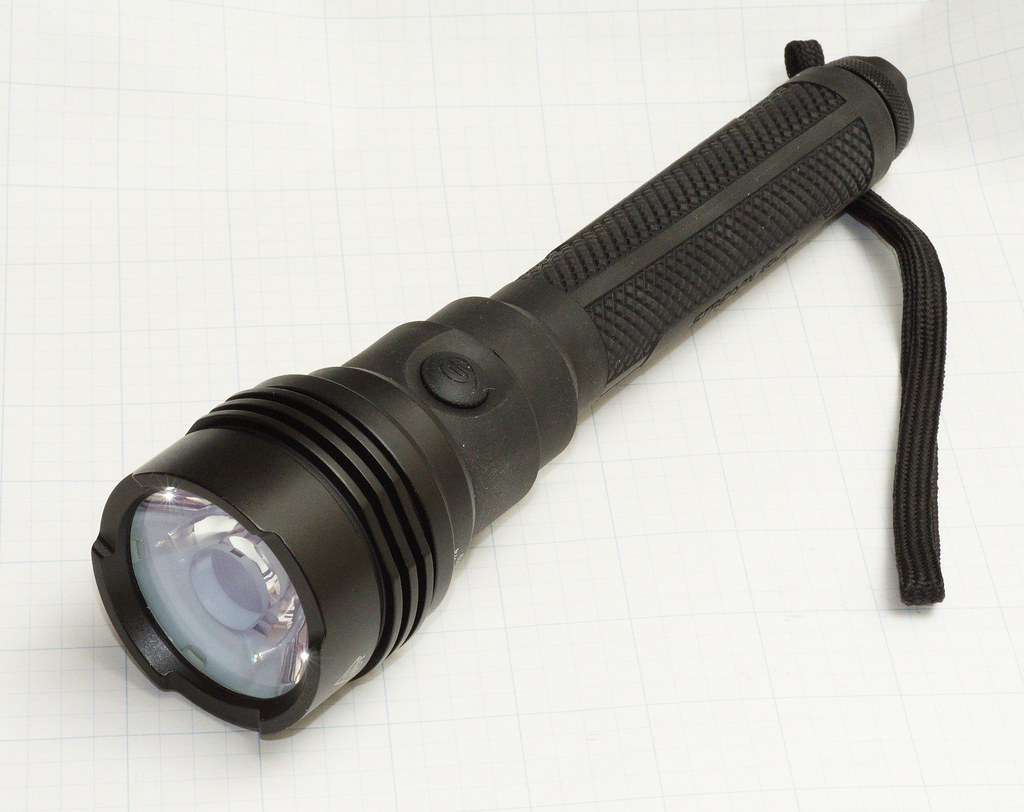
This is beefy for a 18650 light. For comparison a WOWTAC A4 is 0.9” (22.86mm) OD on the tube and is much lighter at 11.5oz. with batteries.
The end cap is not rubber coated. It has a single spring – tapering backwards from what we normally expect.
The threads and O-ring were dry and needed lubing. Even though the endcap and tube threads seem to be coated, the light can’t be locked out by unscrewing the cap. It remains on even with the O-ring well exposed. The threads are a fine pitch with sharp tops – not square cut.
End Cap

The tube and switch area are covered in a firm rubber. Think Hogue grips or inner tube.
There is texture on most of the tube. It gives a very secure hold.
Switch

The head with the heatsink is not covered. There are crenulations on the rim. They are not sharp or deep (lawyer approved?). The purpose is, I assume, to let the user know if the light is on when placed face down on a flat surface.
The battery tube is hefty. It is a bit large for an 18650 at just over 19mm ID. No problems with fat cells getting stuck. The extra space makes me wonder if the batteries could get banged around if the light gets smacked around. Like maybe by the type of duty it’s expected to fulfill?
Batt Tube

Peering down the tube towards the business end I see a flat brass contact.
There are some projections on the side (to protect from reverse polarity?).

A flat top 18650 battery won’t work. A slight protruding flat top (like a Sanyo GA) also won’t make contact.
I used a magnet spacer for the Sanyo GAs and the Samsung 30Qs.
An additional spacer between the batteries is needed to make the battery stack (on the GAs) long enough to get a solid compression of the end cap spring.






